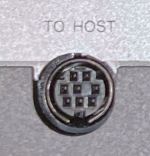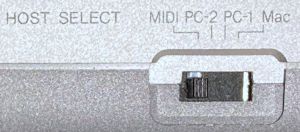Serial MIDI
- This article is a stub. Please help DTM Wiki by expanding it.


Many MIDI modules and similar devices from the 1990's feature a port labelled "TO HOST" or "COMPUTER", which can be used with an appropriate cable to connect the device directly to a computer's serial port. This is also sometimes referred to as "Serial MIDI". From roughly 1999 onwards, USB started to appear alongside or instead of these ports.
Typically, these ports can operate in three to four modes, selected via a switch on the device (usually labelled something like "HOST SELECT"):
- A mode designed for the modem port on old Apple Macintosh computers. This mode is usually labelled "MAC" or "RS422".
- A mode designed for NEC PC-9800 series computers (sold only in Japan). This mode is usually labelled "PC-1" or "RS232C-1". Some devices from the later 1990's omit this mode.
- A mode designed for the 9-pin or 25-pin serial port on IBM PC/AT-compatible computers (common worldwide). This mode is usually labelled "PC-2" or "RS232C-1".
- A mode where this port is not used, and instead the MIDI ports are used. This mode is usually labelled "MIDI".
Each mode (aside from the MIDI port mode) requires a different, special adapter cable.
Often use of this port to connect to a computer, rather than the MIDI ports, can provide additional features:
- It may make the device function as a MIDI interface.
- It may allow access to additional MIDI channels (extra virtual "ports").